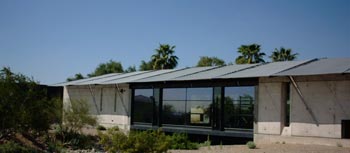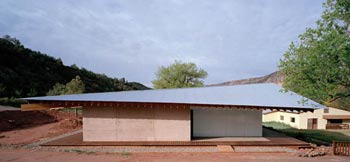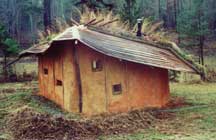
The Rammed Earth House written by David Easton, describes the beauty and grace of rammed earth construction. The photographs of different structures, both modern and ancient, by Cynthia Wright, create a breathtaking glimpse into a building technique that is as old as human history, but exactly suitable for today’s resource-conscious and environmentally friendly building needs. Rammed Earth Works, established in 1978, has distinguished itself as one of the world’s leading company in the research and development of modern earth construction technologies. Founder David Easton is the internationally recognized developer of PISE, Terratile, the Easton forming system for rammed earth and cast elements, and construction systems for engineered earth walls which are code compliant and compatible with current building trades.




